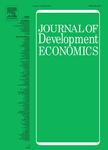-
作者:ROMER, P
作者单位:University of California System; University of California Berkeley; Canadian Institute for Advanced Research (CIFAR)
摘要:The typical economic model implicitly assumes that the set of goods in an economy never changes. As a result, the predicted efficiency loss from a tariff is small, on the order of the square of the tariff rate. If we loosen this assumption and assume that international trade can bring new goods into an economy, the fraction of national income lost when a tariff is imposed can be much larger, as much as two times the tariff rate. Much of this paper is devoted to explaining why this seemingly sm...
-
作者:CHAO, CC; YU, ESH
作者单位:Louisiana State University System; Louisiana State University; Chinese University of Hong Kong; Oregon State University
摘要:This paper examines the resource allocational and welfare effects of exogenous inflows of foreign capital in a general-equilibrium model with oligopolistic competition and unemployment. Although the welfare impact for the short run is ambiguous and dependent upon the strength of excess profits and scale economies relative to unemployment in manufacturing, in the long run additional inflows of foreign capital always improve national welfare with capital mobility. Hence, attracting foreign capit...
-
作者:KIGUEL, MA; LIVIATAN, N
作者单位:Hebrew University of Jerusalem
摘要:The high inflation equilibrium (HIE) refers to a steady state solution where inflation is higher than the one which maximizes seigniorage (i.e. inflation is on the falling segment of the Laffer curve). It has been claimed that the HIE can be stable when the adjustment of expectation is fast. However, adjustment is fast because inflation is high; so the argument is circular. In this paper we rationalize the HIE using the policy game approach which distinguishes between discretionary and precomm...
-
作者:BOUIS, HE
摘要:Cross-section estimates of income elasticities for food staples in the aggregate based on quantity information from household food expenditure surveys are often in the 0.3-0.6 range. It is shown that differences in per capita calorie intakes across income groups implied by these income elasticities are grossly inconsistent with observed differences in bodyweights. Moreover, time series data frequently indicate that national per capita consumption of food staples in the aggregate remains consta...
